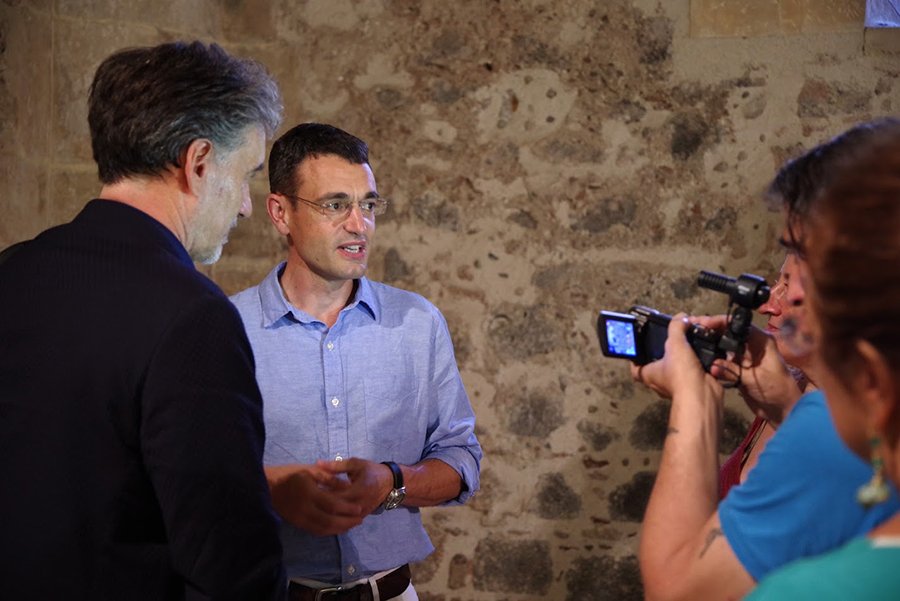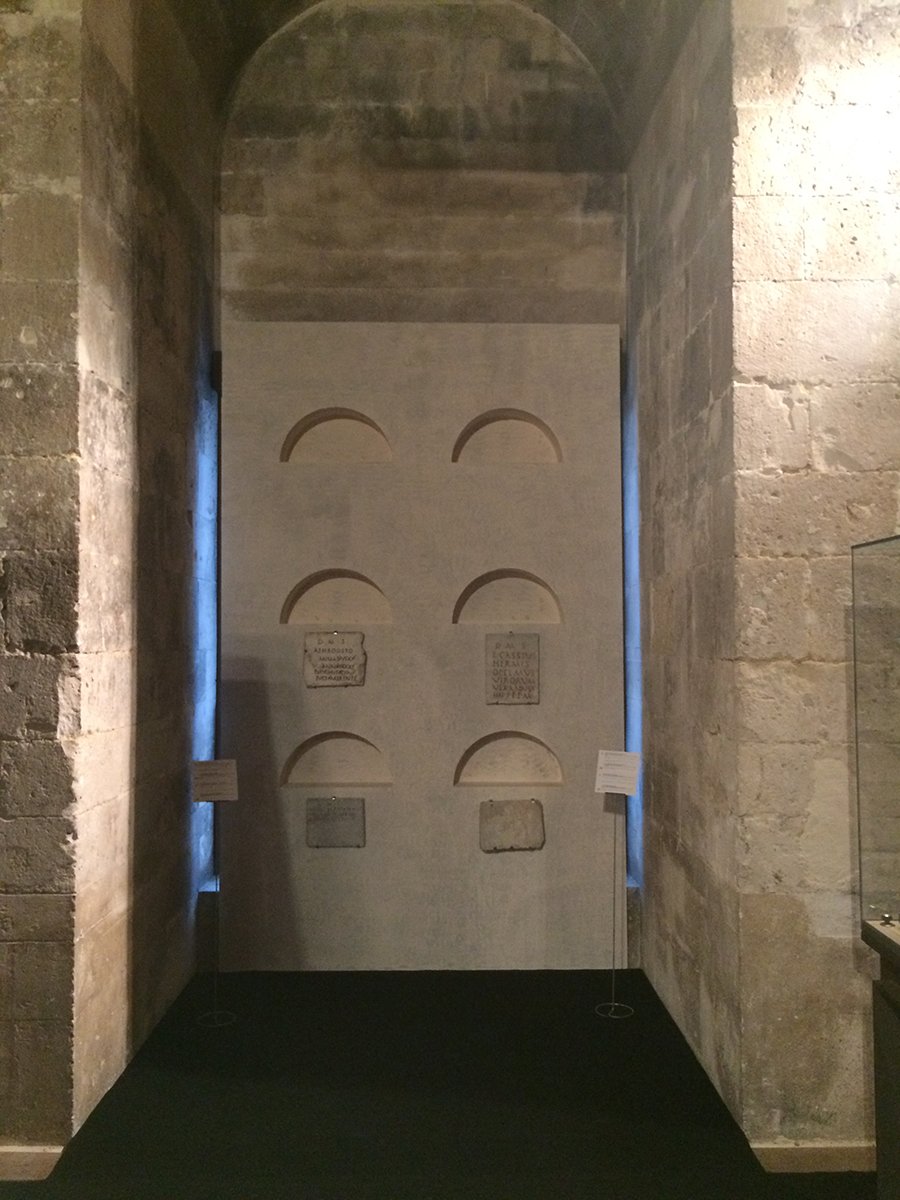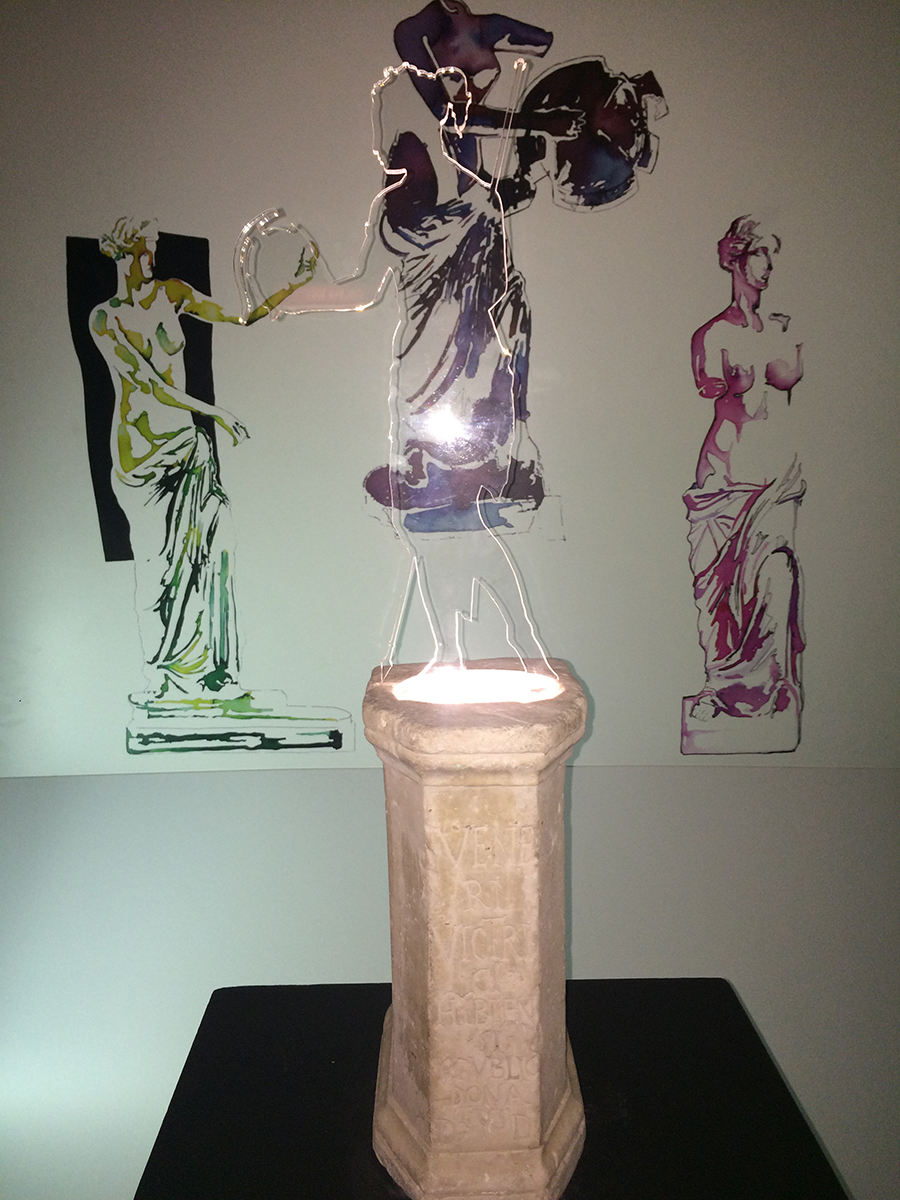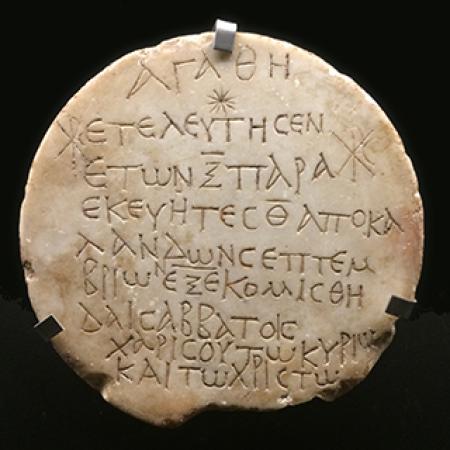‘Voci di pietra’ - Dr Jonathan Prag curates new exhibition of Roman inscriptions
A new exhibition of Roman inscriptions curated by Merton's Tutor in Ancient History Dr Jonathan Prag has opened in Catania on the Italian island of Sicily. The exhibition carries the evocative title 'Voci di pietra' ('Voices of stone') and consists of some 35 inscriptions along with sculptures and a set of frescoes from the collection of the city's Civic Museum.
Supported by an Oxford Knowledge Exchange Fellowship, Jonathan has been working with the City of Catania, its Civic Museum, the Italian CNR’s Institute of Cognitive Science and Technologies (ISTC-CNR), and students and teachers from a local school to catalogue the museum's collection, and a selection of this material has been chosen for this new permanent exhibition. The oldest inscription on show dates back to 500-600 BC; most of the material dates between the first and the fifth century AD, between 1,500 and 2,000 years old.

The exhibition, which was opened by the Mayor of Catania on 14 July, occupies three rooms of Castello Ursino, the Norman castle which houses the museum: Room 1 introduces the subject of epigraphy - the study of texts written on durable materials such as stone, metal, or ceramic, and the languages of ancient Sicily, together with the museum's collection; Room 2 presents examples of public inscriptions from the Roman colony of Catania, including statue bases, building records and imperial documents; and Room 3 presents a selection of tombstones from the Roman city - pagan, Christian and Hebrew - and includes a reconstruction of a Roman columbarium, in which funeral urns were stored.

Jonathan describes what these objects tell us:
"The inscriptions provide evidence both about the city's public life and the private lives of its citizens. About half of the inscriptions are funerary inscriptions erected in memory of individuals by family members. The inscriptions show the diversity of religious culture, with pagan, early Christian, and Jewish groups represented. They also illustrate the city's linguistic diversity, often showing linguistic interference and crossover between languages."
Whilst the materials for the exhibition were prepared under Jonathan's direction, the majority of the design work and many individual elements (including videos and reconstructions) were undertaken by over 100 students from 12 different classes of the Liceo Artistico Statale M.M. Lazzaro, with the support of their teachers. The school has received a substantial prize from the Italian ministry of education, recognising the project as the best in the Region of Sicily; they plan to use the prize to visit Oxford in the autumn.

Jonathan's favourite item from the exhibition is the inscribed base for a small statue dedicated to Venus Victrix (Venus ‘victorious’), of the second century AD. He explains why:
"The statue itself is lost, but the school students with whom I was collaborating studied the known iconography for Venus Victrix and created a silhouette reconstruction of the statue in clear perspex, which has been mounted on the base in place of the original and with suitable lighting looks very striking indeed."
The museum's future plans include making a digital catalogue of the exhibition available online. Meanwhile Jonathan is engaged in a much larger project, I.Sicily, which will create an online edition of all of the inscriptions from ancient Sicily. You can discover more about the ongoing work of this project at http://sicily.classics.ox.ac.uk and https://isicily.org.
